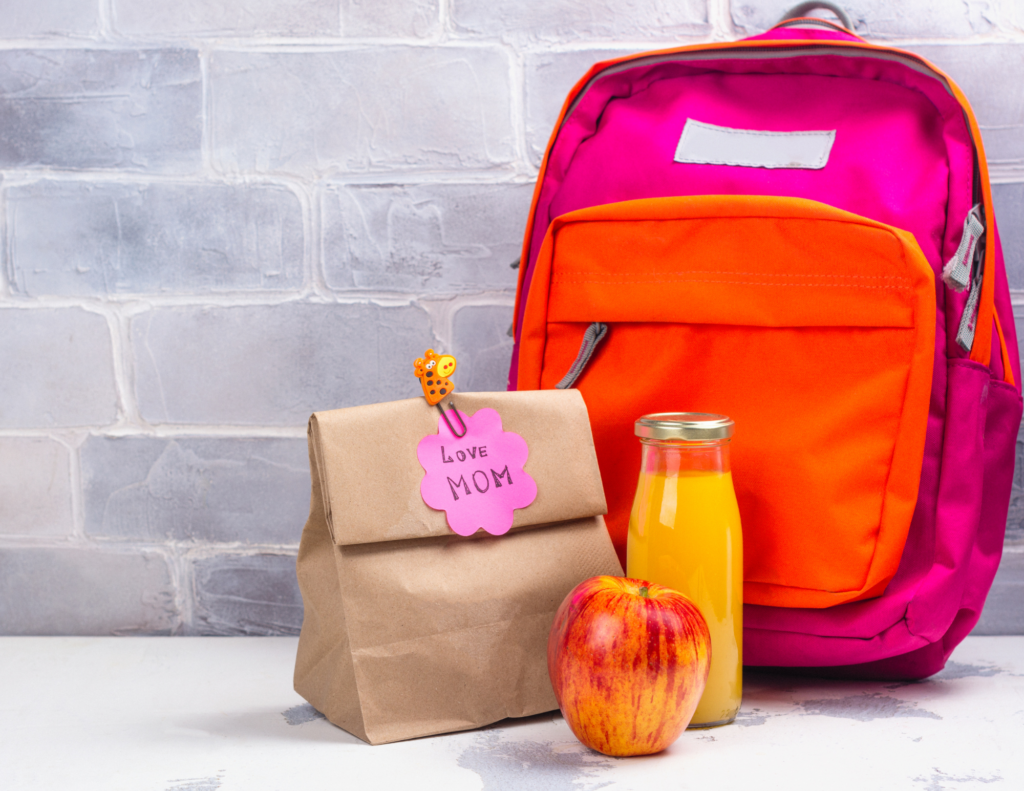Back to School Lunches: Creating a Kid-Friendly, Gluten-Free, Anti-Inflammatory Diet

As the new school year begins, parents are not only focused on packing school supplies but also on preparing nutritious meals that support their children's health. One powerful approach is to incorporate anti-inflammatory foods into your child's diet, which can help reduce inflammation, boost immunity, and promote overall well-being. Here’s a guide on creating a kid-friendly anti-inflammatory diet, complete with gluten-free and dairy-free options, back-to-school tips for packing healthier snacks and school lunches, and a focus on proper hydration and fiber intake.
Understanding Inflammation and Why It Matters
Inflammation is the body's natural response to injury or infection, but when it becomes chronic, it can lead to various health issues, including allergies, asthma, digestive problems, and even behavioral challenges. By reducing inflammation through diet, you can help your child feel better, concentrate more effectively at school, and maintain a healthy immune system.
ARTICLE CONTINUES BELOW
Schedule a Consultation TODAY!
We would love to sit down with you and chat about your experiences and current pain points.
Key Components of a Kid-Friendly Anti-Inflammatory Diet
-
Whole Grains Instead of Refined Carbohydrates
- Tip: Replace white bread, pasta, and rice with gluten-free whole grains like quinoa, brown rice, and gluten-free oats. These options are higher in fiber and nutrients, helping to stabilize blood sugar and reduce inflammation.
- Back-to-School Trick: Make sandwiches with gluten-free bread or wraps. You can also pack gluten-free whole-grain crackers as a crunchy snack alternative to chips.
-
Healthy Fats for Brain Development
- Tip: Incorporate sources of omega-3 fatty acids, such as fish, walnuts, chia seeds, and flaxseeds, which are known to reduce inflammation and support brain health.
- Back-to-School Trick: Pack a small container of mixed nuts (like walnuts and almonds) or include a gluten-free tuna salad wrap in their school lunch.
-
Colorful Fruits and Vegetables
- Tip: Encourage your child to eat a rainbow of fruits and vegetables. Berries, leafy greens, carrots, and bell peppers are rich in antioxidants and vitamins that fight inflammation.
- Back-to-School Trick: Create fun, colorful fruit kabobs with berries, grapes, and melon or pack sliced bell peppers and baby carrots with a dairy-free hummus dip.
-
Lean Protein Sources
- Tip: Choose lean proteins like chicken, turkey, and legumes that are less likely to cause inflammation compared to processed or red meats. Ensure these proteins are free of gluten-based marinades or coatings.
- Back-to-School Trick: Prepare a chicken or turkey wrap with plenty of veggies on a gluten-free tortilla, or include a hard-boiled egg and some edamame for a protein-packed, gluten-free snack.
-
Probiotics for Gut Health
- Tip: Include dairy-free, probiotic-rich foods like coconut yogurt, kefir made from almond or coconut milk, and fermented vegetables to support a healthy gut, which is essential for reducing inflammation.
- Back-to-School Trick: Pack a small container of dairy-free yogurt with a side of gluten-free granola or a kefir smoothie made from almond milk as part of a balanced school lunch.
-
Increasing Fiber Intake for Digestive Health
-
- Tip: Fiber is essential for maintaining a healthy digestive system and preventing inflammation. High-fiber foods also help stabilize blood sugar levels, keeping your child energized throughout the school day. Include fiber-rich foods like fruits, vegetables, legumes, and gluten-free whole grains in your child’s diet.
- Back-to-School Trick: Add fiber-rich snacks like apple slices with almond butter, carrot sticks, or a small container of mixed berries to your child’s lunchbox. You can also include a veggie omelet made with spinach, bell peppers, and tomatoes as a nutritious, fiber-packed option for breakfast or lunch.
-
Proper Hydration for Overall Well-being
- Tip: Hydration is crucial for your child's overall health, particularly for their cognitive function, energy levels, and digestive health. Dehydration can lead to fatigue, headaches, and difficulty concentrating. Encourage your child to drink water throughout the day, especially during school hours.
- Back-to-School Trick: Send your child to school with a water bottle to ensure they stay hydrated throughout the day. To make hydration more appealing, add a slice of lemon, cucumber, or a few berries to the water for natural flavor. For kids who need more encouragement to drink water, consider using a fun, colorful water bottle or one with measurement markings to track their intake.
-
Limit Sugary and Processed Foods
- Tip: High sugar and processed foods can trigger inflammation. Opt for natural sweeteners like honey or maple syrup and focus on whole, unprocessed snacks that are free from gluten and dairy.
- Back-to-School Trick: Instead of sugary snacks, pack fresh fruit, homemade energy balls made with gluten-free oats and honey, or a small square of dairy-free dark chocolate as a treat.
Back-to-School Tips for Packing Healthier Snacks and Lunches
- Prep Ahead of Time: Spend some time on the weekend preparing and portioning out gluten-free and dairy-free snacks and lunches for the week. This makes it easier to grab healthy options when you’re in a rush.
- Get Creative with Lunch Boxes: Invest in a bento-style lunch box with separate compartments. This not only keeps food fresh but also allows for a variety of gluten-free and dairy-free foods to be included, making lunch more interesting.
- Involve Your Kids: Let your child choose which gluten-free and dairy-free fruits, veggies, and proteins they want to include in their lunchbox. Involving them in the process increases the likelihood they’ll eat what’s packed.
- Use Reusable Snack Bags: Pack gluten-free snacks like nuts, fruits, or gluten-free crackers in reusable bags. This is not only environmentally friendly but also encourages portion control.
- Hydration Matters: Encourage your child to drink water throughout the day. Send them to school with a reusable water bottle that they enjoy using, and consider adding natural flavors like lemon or cucumber to make water more appealing.
- Balance Is Key: Aim for a balance of gluten-free protein, healthy fats, fiber, and plenty of water in every meal to keep your child full, focused, and hydrated throughout the day.
- Opt for Natural Sweet Treats: Instead of processed cookies or candies, include naturally sweet treats like dried fruit, homemade muffins made with gluten-free flour, or apple slices with nut butter.
- Label Foods for Fun: Use fun stickers or labels to make healthy, gluten-free and dairy-free foods more appealing. For example, label a fruit container as "Brain Power Berries" or a dairy-free yogurt pack as "Superhero Smoothie."
- Plan for Variety: Change up the contents of the lunchbox daily to keep your child interested in eating healthy. Rotating different gluten-free and dairy-free fruits, veggies, and proteins helps ensure they get a range of nutrients.
- Educate About Food Choices: Teach your child why certain gluten-free, dairy-free, and fiber-rich foods are included in their lunchbox. Understanding the benefits of healthy eating and proper hydration empowers them to make better choices independently.
By focusing on these functional medicine principles and packing healthy, anti-inflammatory, gluten-free, dairy-free, fiber-rich foods, and ensuring proper hydration, you can support your child's health and help them thrive both in and out of the classroom.
Schedule Your Telehealth Consultation
We would love to sit down with you and chat about your experiences and current health complaints.
The information on this website has not been evaluated by the Food & Drug Administration or any other medical body. We do not aim to diagnose, treat, cure or prevent any illness or disease. Information is shared for educational purposes only. You must consult your doctor before acting on any content on this website, especially if you are pregnant, nursing, taking medication, or have a medical condition.

By Dr. Todd W. Bunning
Dr. Todd W. Bunning’s Chiropractic and Functional Medicine services reach far beyond the local Roseville area, with webcam consultations available for patients in any location. With over 21+ years of Private Practice experience, Dr. Todd continues to focus on the individual: science-based methods to address whole-body health factors.
Dr. Todd’s education didn’t stop when he graduated from Life West Chiropractic College in 2003. Today, he’s continuing to receive training and is chipping away on numerous post-graduate degree programs. This unique blend of clinical health investigation and Lifestyle Medicine application helps people of all ages find the underlying factors that result in chronic disease.